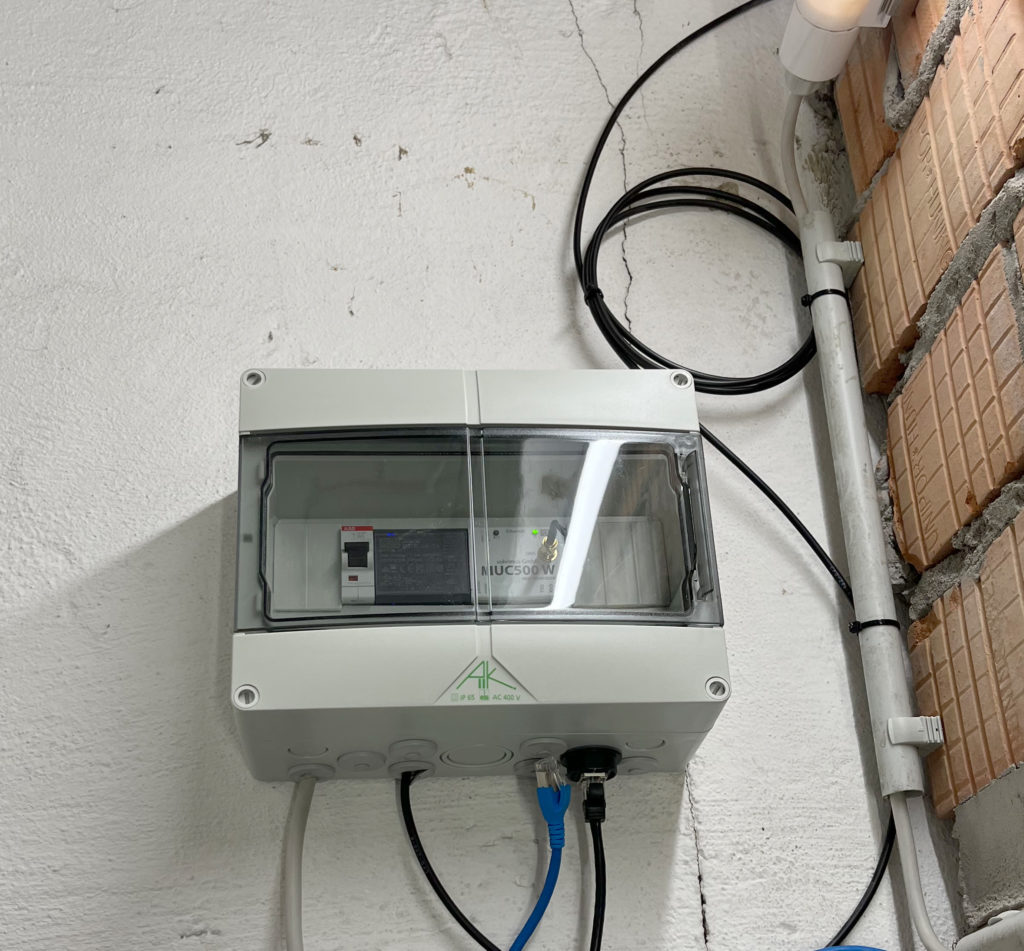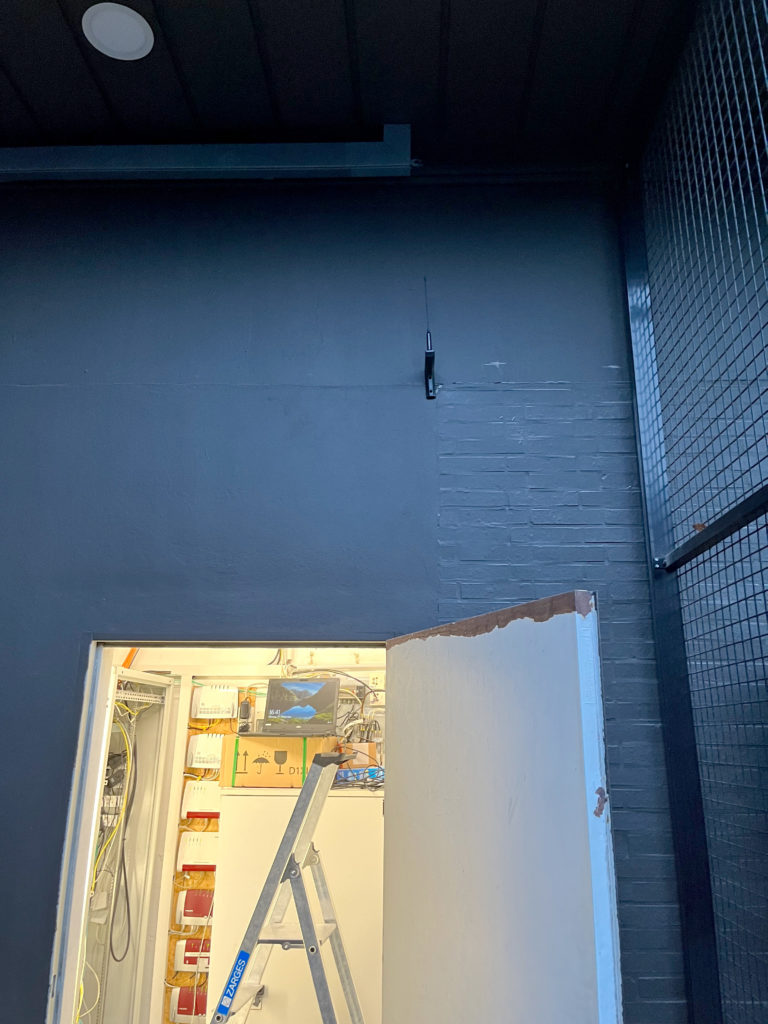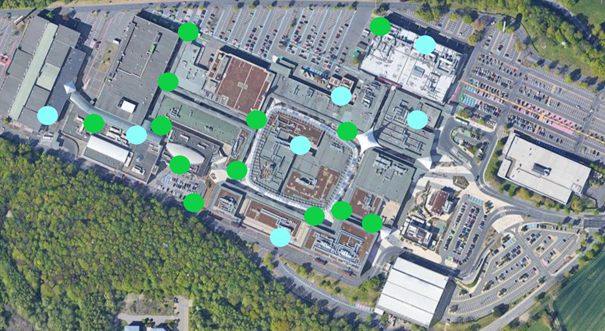Time and again we get queries from customers’ projects where installed wM-Bus meters in a property are to be comprehensibly and reliably captured and processed for energy management or energy monitoring. But how can one achieve comprehensive area-wide capturing? Which technology is required? Where precisely should the devices be installed?
In this blog post we reveal how we master this task in assisting our customers.
A brief introduction will aid in comprehending how the wM‑Bus is functioning and in which aspects it differs from the M-Bus.
However is familiar with M-Bus is aware that only one single master can be present in an M-Bus network. All meters are connected to this master. This M-Bus master feeds energy to all meters via a two-wire line while at the same time controlling the communication and capturing meter data. The connected meters send data exclusively upon request from the master.
This is distinct in the wM-Bus. There is no physical link between the sender (meter) and receiver. Further, no direct communication occurs between sender and receiver. The meter emits recorded consumption data in a pre-defined interval, either encrypted or not, via its wM-Bus radio module on the frequency 868 MHz, which is widespread in Europe. Depending on a range of factors, the receiver is able to pick up and process the telegram of the meter. This renders the commissioning and the verification of the readout infrastructure and signal quality intricate. One depends on the sending interval of the meters and it occurs that one spends a longer time waiting.
In an initial discussion with the customer we clarify the respective conditions of the property.
How many meters are to be captured? Are all meters equipped with a wM-Bus module? Where are the meters? Is Ethernet available in the property? This information enables us to take an initial tentative decision which technology is to be implemented and at which locations.
However, we always propose an on-site inspection to leave as little as possible to chance. On this occasion, we capture meter data at various locations with our mobile recording station over a period of 30 to 60 minutes. It is equipped with a MUC500 W data concentrator, a rechargeable battery and a GPS receiver. We are thus able in the follow-up analysis to compare the various locations and single out the one offering good or sufficient network connectivity (RSSI) for most meters.
That suffices to theory, but how does this translate into real life.
I picked a representative customers’ project where we implemented the meter data reading exclusively by wM-Bus. It is a large shopping centre stretching over an area of 285,000 m² with more than 500 meters. All meters are exclusively installed on the ground floor. This eliminates the need to capture meters from different floors. After the on-site inspection and the follow-up analysis, we recommended a solution as follows:
- 7x MUC data concentrators
Installed in a control cabinet with a 24 VDC supply, MUC500 W and an antenna, for wall mounting. - 13x wM-Bus repeaters
After a consultation with the customer we finalised the locations where the devices are to be installed. The customer agreed to install the devices on his own.

solvimus MUC data concentrator

Technical room and antenna for wall mounting
The wM-Bus repeaters are installed at the locations of the green dots, and the MUC data concentrators at the locations of the turquoise dots.

We commissioned the devices in an on-site appointment. We double-checked the list of detected meters in Excel at hourly intervals with the meter list provided by the customer.
After a certain time had elapsed, almost all meters could be captured at least once. The few missing meters were inspected at their location in cooperation with the customer. It turned out that these meters did not feature a wM-Bus module. The customer was thus able to order modules and verify later on whether these could be recorded as well.
To close the project, the data transmission to the energy management system was configured and tested.
Our conclusion:
„Good planning is half the life.“
This is confirmed once more by this project. The on-site inspection and the follow-up planning has considerably simplified the commissioning.
We therefore urge to plan projects with wM-Bus meter interface consciously.


